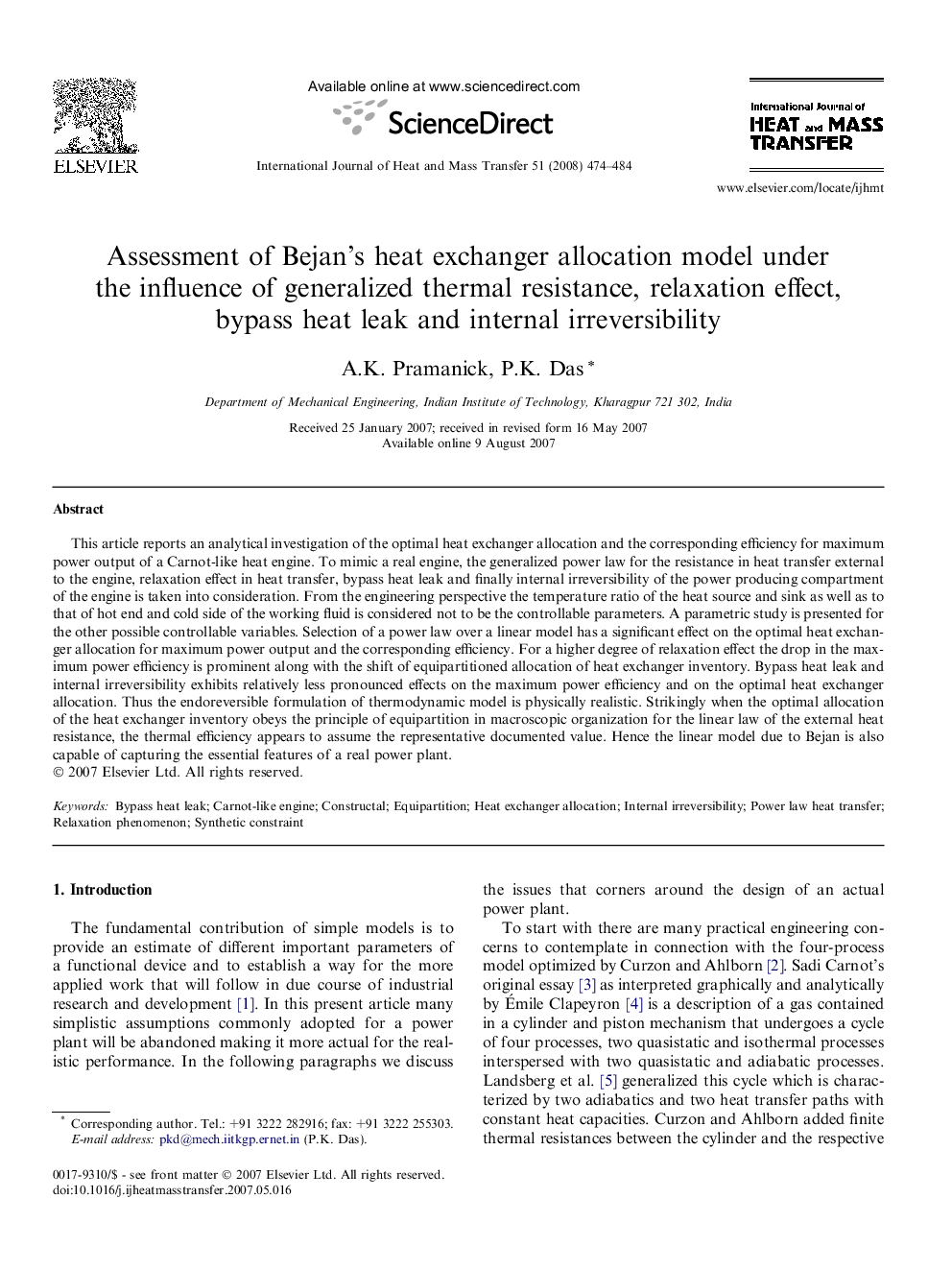| Article ID | Journal | Published Year | Pages | File Type |
|---|---|---|---|---|
| 662882 | International Journal of Heat and Mass Transfer | 2008 | 11 Pages |
This article reports an analytical investigation of the optimal heat exchanger allocation and the corresponding efficiency for maximum power output of a Carnot-like heat engine. To mimic a real engine, the generalized power law for the resistance in heat transfer external to the engine, relaxation effect in heat transfer, bypass heat leak and finally internal irreversibility of the power producing compartment of the engine is taken into consideration. From the engineering perspective the temperature ratio of the heat source and sink as well as to that of hot end and cold side of the working fluid is considered not to be the controllable parameters. A parametric study is presented for the other possible controllable variables. Selection of a power law over a linear model has a significant effect on the optimal heat exchanger allocation for maximum power output and the corresponding efficiency. For a higher degree of relaxation effect the drop in the maximum power efficiency is prominent along with the shift of equipartitioned allocation of heat exchanger inventory. Bypass heat leak and internal irreversibility exhibits relatively less pronounced effects on the maximum power efficiency and on the optimal heat exchanger allocation. Thus the endoreversible formulation of thermodynamic model is physically realistic. Strikingly when the optimal allocation of the heat exchanger inventory obeys the principle of equipartition in macroscopic organization for the linear law of the external heat resistance, the thermal efficiency appears to assume the representative documented value. Hence the linear model due to Bejan is also capable of capturing the essential features of a real power plant.
